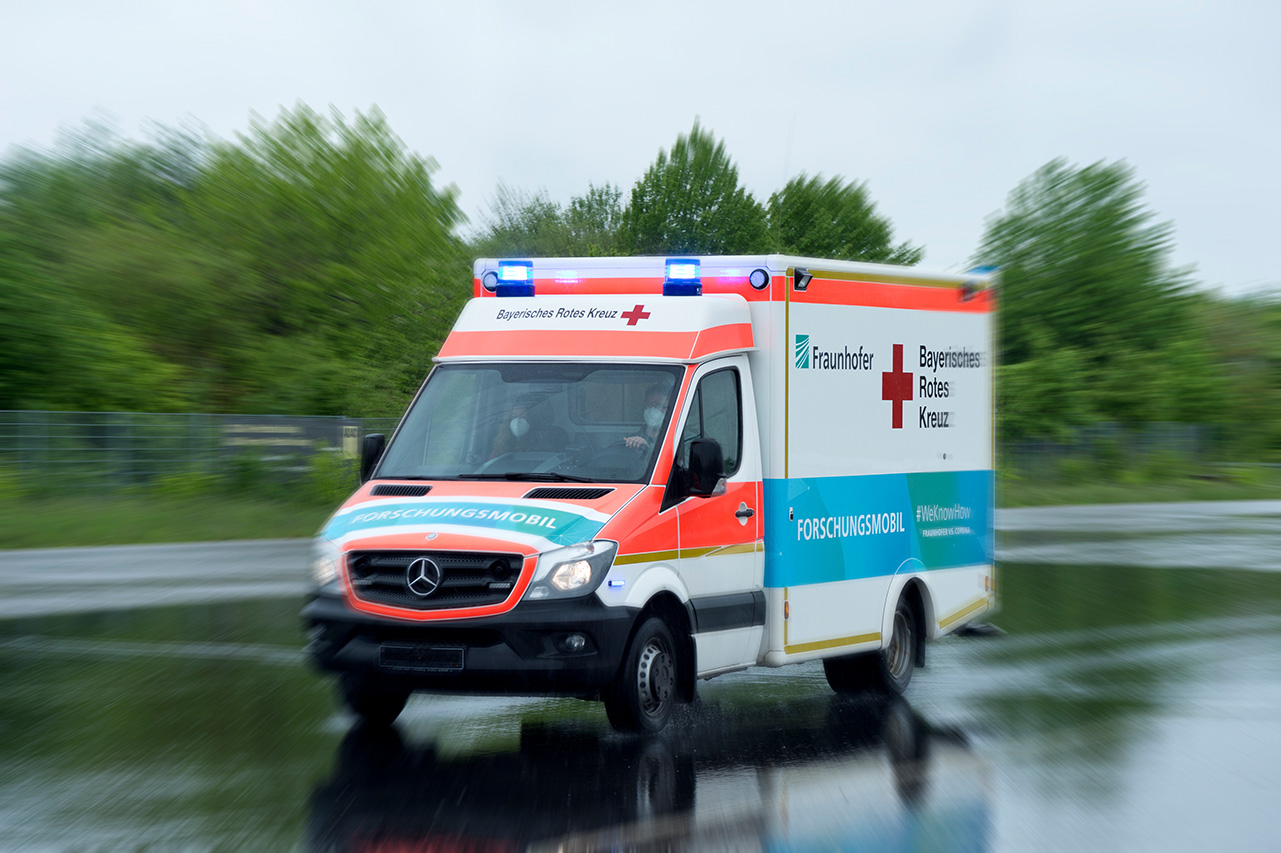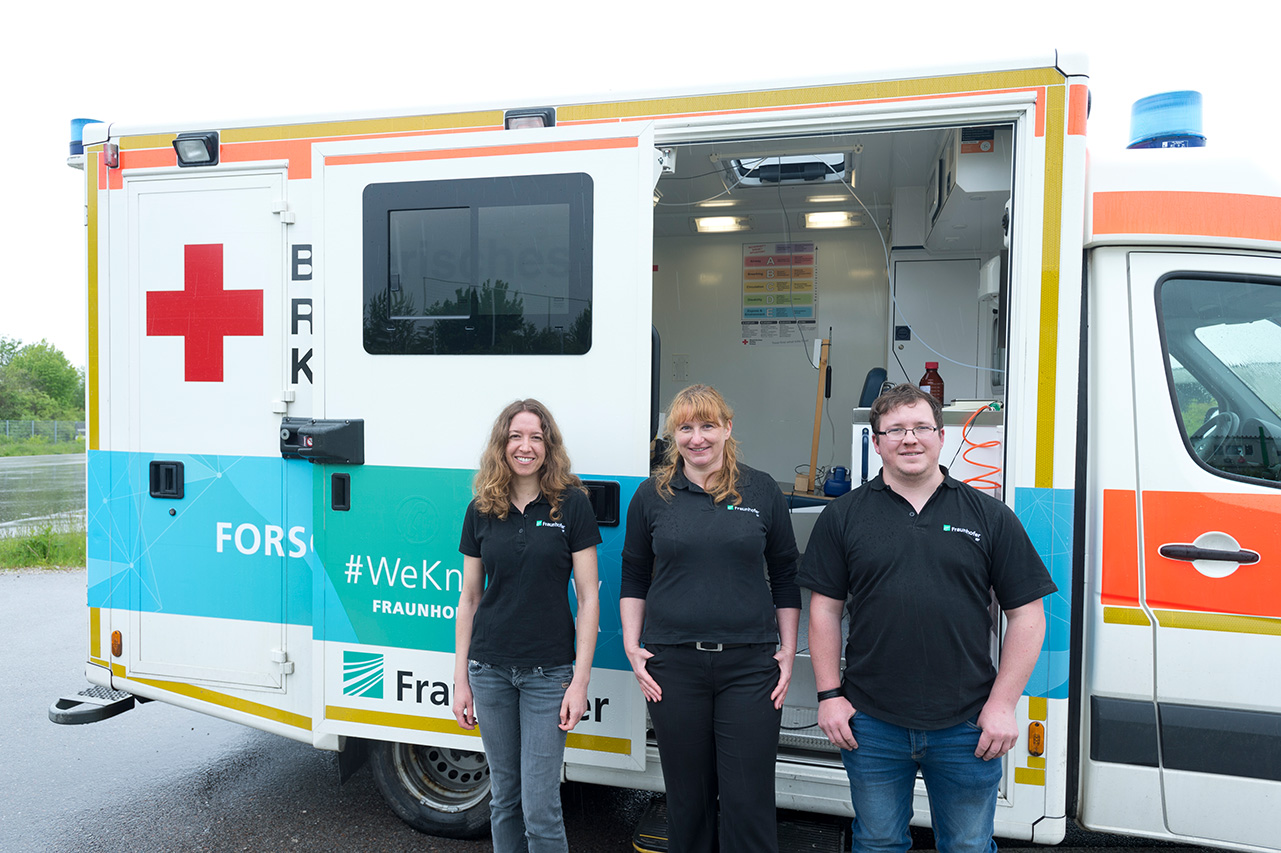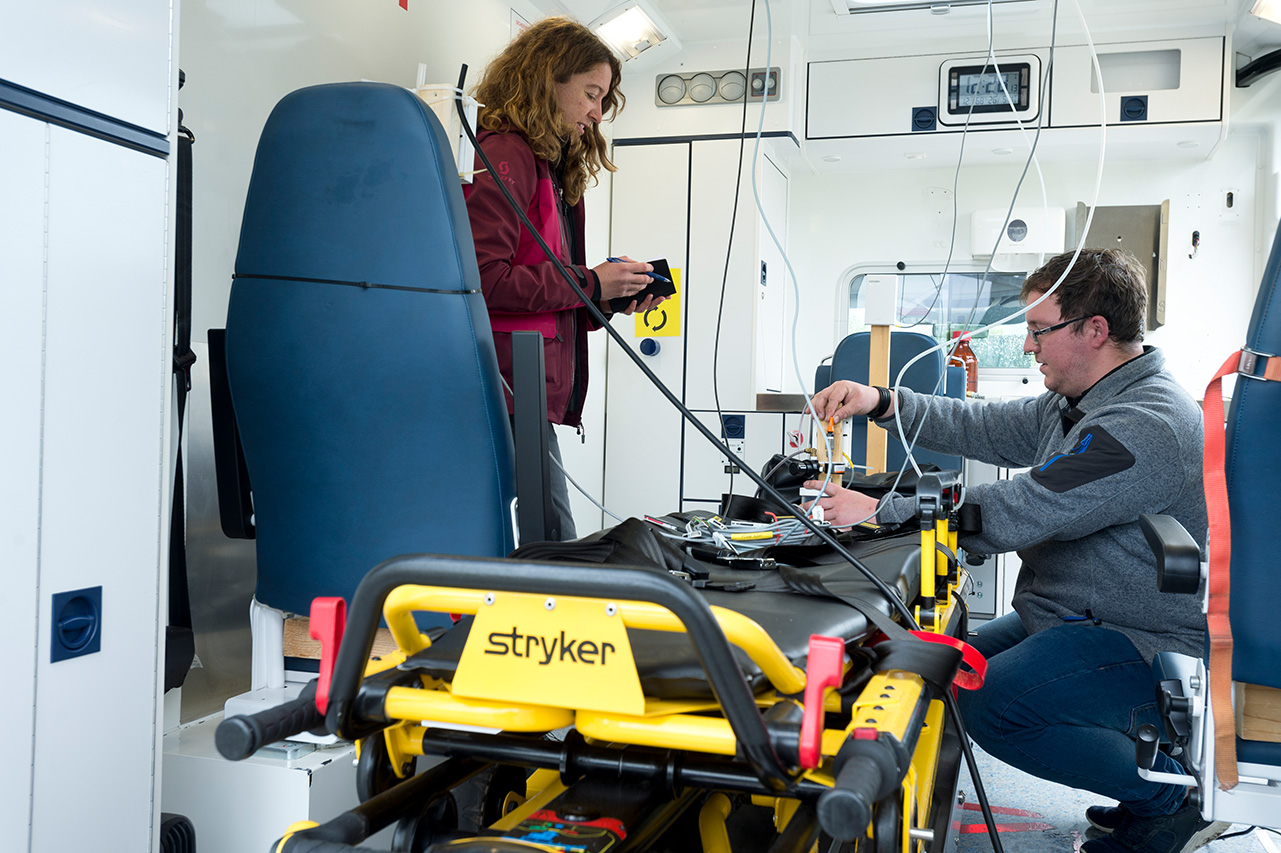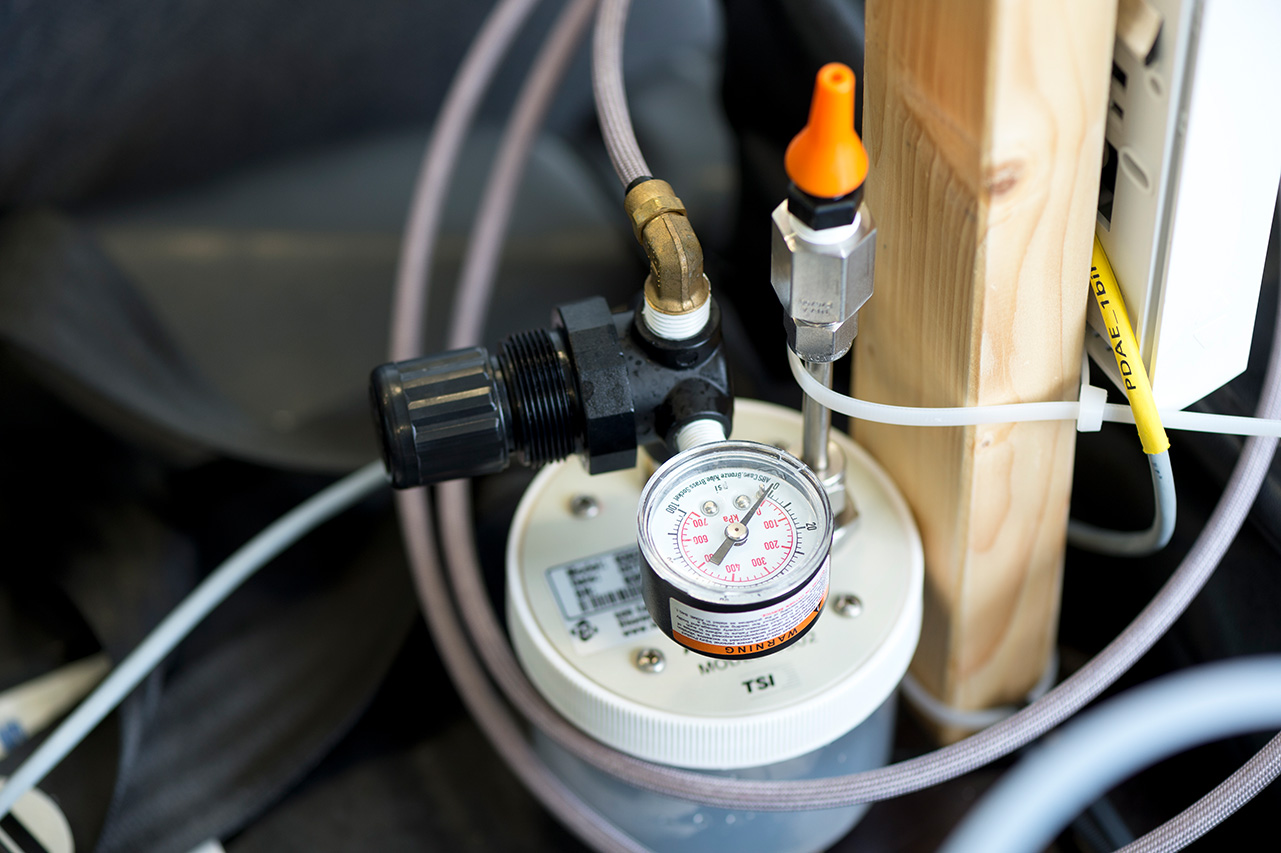
As part of the Fraunhofer Anti-Corona Program, scientists from Fraunhofer IVV and Fraunhofer IBP have been working together on a project for several months. Their aim was to reduce the risk of infection for paramedics and (subsequent) patients in ambulances by finding ways of eliminating viruses in a swift and efficient manner. They studied the accumulation of model viruses similar to SARS-CoV-2, which are harmless to humans, under various ventilation scenarios, as well as the use of a plasma technology to decontaminate ambulances after transporting a patient. The results were combined in a final joint test campaign and presented to representatives of the Bavarian Red Cross.


